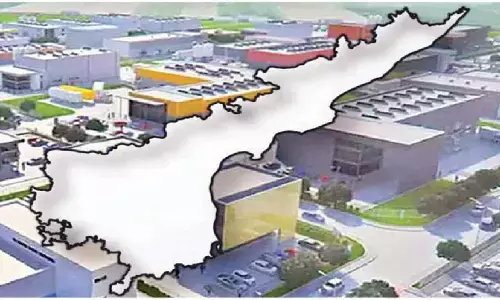Integrating Indian market with the world

Integrating Indian market with the world
Foreign trade is an engine of growth and a poor country cannot afford the luxury of foregoing it.
Foreign trade is an engine of growth and a poor country cannot afford the luxury of foregoing it. It not only permits proper use of the resources of the country, but also makes available necessary inputs for industrialisation, provides an outlet for surplus production, and helps the country to deal with natural calamities through import of food grains and other consumer goods. An appropriate and skilfully designed foreign trade policy is essential for the planned accelerated economic growth in a developing country.
The pattern of India's foreign trade before independence was that of a colonial and agricultural country. Most of the trade took place with England and Commonwealth countries involving to a few primary commodities. The imports, on the other hand, consisted of manufactured articles. Though the balance of trade was favourable, it concealed a low level of industrialisation in the country.
After independence, the pattern of India's foreign trade has undergone changes mainly as a result of industrial progress. It became an integral part of our general economic policy and planned development, meant to subserve the objectives of our planned growth. A path of planned regulation was pursued till mid-1980s, a partial liberalisation from mid-1980s and a switch over to a more explicit liberalisation during 1990s and later. The process is still on and far from finished.
Since 2010 onwards our exports of commodities and goods have stagnated around US $ 300 billion with a marginal variation of 5 per cent in a few years. Over 30 per cent, by value, of the export basket comprises commodities and goods where value addition is less than 5 per cent.
In a developing country, such as India, the deficit in the balance of trade is not unexpected. Heavy imports of machinery, raw materials, technical know-how are necessary to build up the industrial base of the country during the process of economic development.
A matter of serious concern is the recent substantial increase in the value of imports which is mainly on account of the rapidly increasing bill of crude oil and petroleum products and not the increase in developmental imports.
On the other hand, the present environment for India's exports is not so favourable because of slow-down in some of the major economies of the world, stagnation and increasing protectionist barriers by the developed countries.
For example, the speed at which a country's imports of manufactured products decline and export of such products increase is considered as an indication of the speed of economic development in the country. Since independence the composition of India's foreign trade has changed in accordance with the economic progress of the country.
For quite some time now, as a result of the changing requirements of the process of industrialisation, there has been a shift in India's import trade from primary products to capital goods and other intermediate manufactures. During the first two Five Year Plan periods, India's major imports consisted of food grains, cotton, jute, etc. But, after that the trend has changed.
Now the import of primary fertilisers iron and steel, non-ferrous metals, and other industrial inputs has increased substantially. Formerly, there were many countries with whom we had no or insignificant trade. But, at present, we have trade relations with most of the countries of the world.
Another significant development is the emergence of socialist countries as major sources of India's imports. Imports from U.S.S.R., which were negligible in 1950-51, increased rapidly from 1.4 per cent in 1960-61 to 8.1 per cent in 1980-81. Imports from Russia were 1.0 per cent in 2002-03.
A High-Level Advisory Group (HLAG) led by the economist Surjit S Bhalla, was constituted in September 2018, by the Ministry of Commerce on what India must do for exports to reach $1 trillion by 2025 from the current level of $300 Billion and further to become a $ 5 Trillion economy as aspired and to identify and pursue opportunities and address challenges in the current global trade scenario.
HLAG made several recommendations on matter sus as labour laws, easing of controls, making available cheaper control etc. Another welcome step is the Constitution of District Export Production Committee. Focus on infrastructure is the need of the hour. Upgrading existing ports, warehouses, quality testing & certification centres & building new ones assume high priority.
A scheme called Trade Infrastructure for Export Sector (TIES) was launched in 2017 for a period of three years for developing trade infrastructure to promote exports. The industry is looking for the extension TIES scheme with a refocus on resolving two major issues that plague exporters, warehousing & storage, including an efficient cold chain.
In place of subsidies, exporters may still need some financial support in the form of tax cuts. The existing schemes such as the Export Promotion Capital Goods (EPCG) and Duty Drawback Scheme need to be revamped and restructured as these schemes have not been as successful as envisaged.
India needs modern trade practices such as digitisation and e-commerce to insulate the industry from disasters like Covid pandemic. Digitisation can start with making common import-export processes paperless. The creation of increased awareness about the export trade formalities including international laws & standards, global markets, intellectual property rights, patents & geographical indication (GI) is paramount.
Export-oriented firms can emerge & flourish in labour-intensive sectors such as apparel, footwear, furniture, toys, kitchenware & stationery among others. Over the past six decades, the world is increasingly getting integrated into manufacturing global chains. For instance, Iphone research and patents are in the USA, while the majority of OEM parts are manufactured by Taiwan while assembly takes place in China.
India, as said earlier, has not permitted its manufacturing to be globally integrated by imposing and maintaining very high import tariffs. (The rise of East Asian tigers in the 1960s is essentially due to integrating their economies by reducing import tariffs and as a result global manufacturing hubs are now based in those countries).
India has to subscribe to world standards in protecting patents. The extant regime is very weak and very few global companies are willing to set up shop here. Decades of socialism have insulated India from integrating with global markets by imposing very high import duties under the hope that 'Make in India' will bring prosperity.
We must integrate the Indian market with the world. 'Make in India' will not work as it has not worked since 70s. A good starting point for this would be the United Kingdom and European Union. These are large markets and their agricultural sectors pose no threat to the livelihood of India's farmers.
Despite its 1.3 bn population, India's manufacturing sector has a very weak base with very few cases of intellectual property (IP) rights or patents in cutting edge technologies. Oddly India is one of the exceptions where quality standards (BIS) are voluntary. Very few manufacturers perceive as incentive in producing quality products which can compete globally. Only recently has GoI mandated compulsory standards in about 50 electronic products (out of a million other products).
Apart from building up awareness on the imperatives of exports, the opportunities and the challenges, the government of India will need to work on strengthening and streamlining, the single window system already in place in the Directorate General of Foreign Trade.
(The writer is former Chief Secretary, Government of Andhra Pradesh)

















